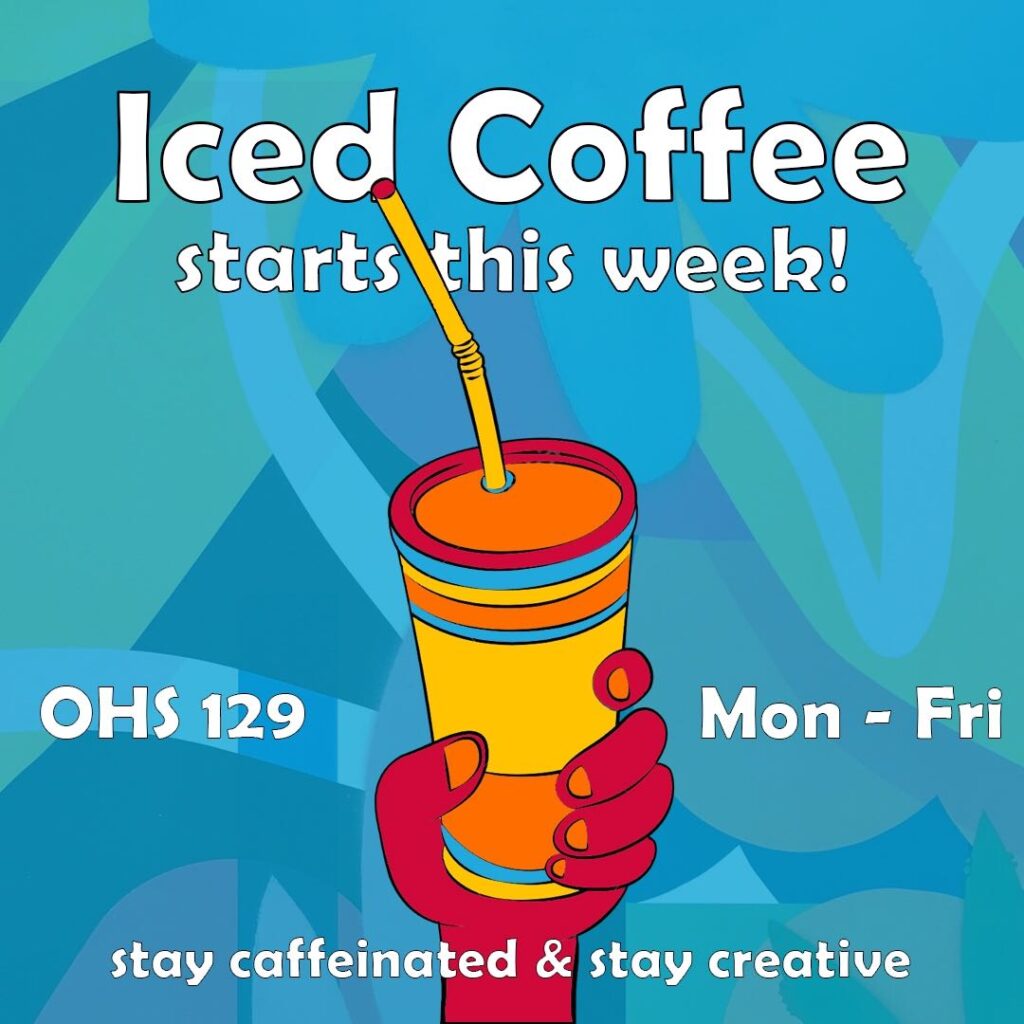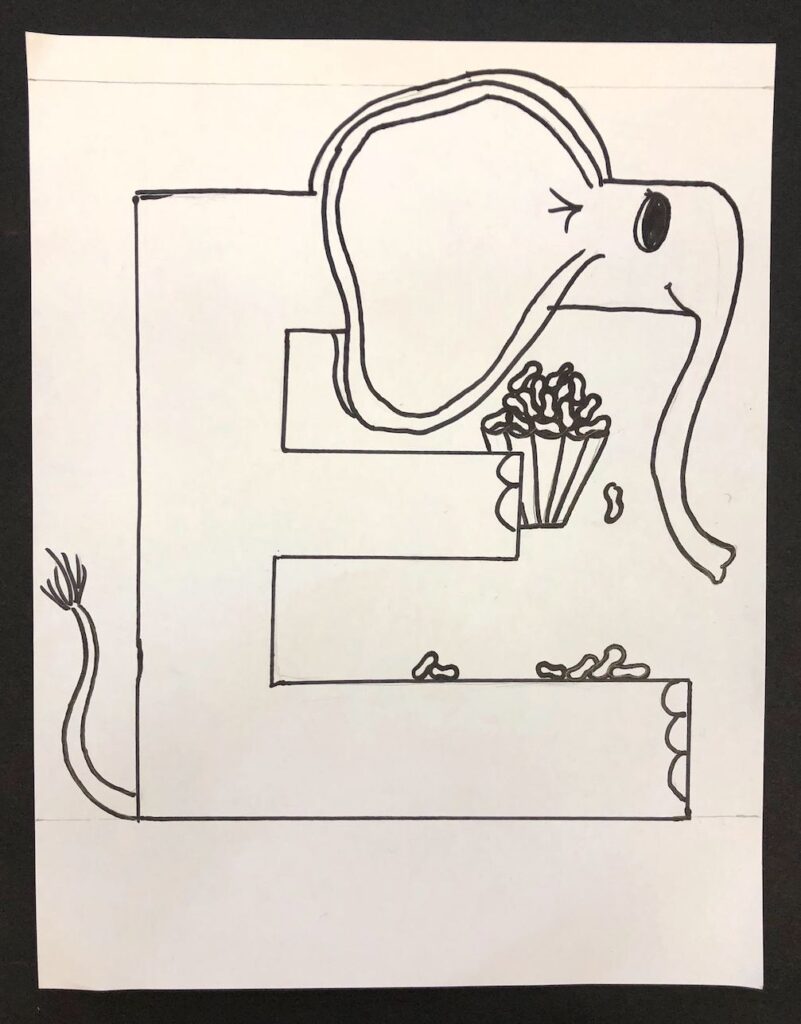Art Education and the Coronavirus (COVID-19)
As we continue to plan for engaging eLearning activities, many of us have turned to creative drawing prompts. We challenge our students with a prompt that is open to their own interpretation. The Art of Education University has a list of creative sketchbook prompts you can use with your students.

Consider taking this activity one step further and basing your drawing prompts around work by contemporary artists and/or graphic designers. This gives your activity some real-life applications and provides your students with inspiration and reference images.
A Great eLearning Design Challenge
Graphic designers can be a great resource as many of their websites include portfolios of work they’ve done for different clients. Graphic design in itself is a series of challenges. The designer has to create visual imagery that communicates information for a client. Not only does the work need to serve a distinctive purpose, but the designer also has to please the needs and aesthetics of the client.
First: Choose a Graphic Designer
Search online for graphic designers and choose work that will inspire your students. Select someone who has an online portfolio your students can view. This will allow your students to see the importance of continuity, color schemes, and text in graphic design.
Share a link to the graphic designer’s portfolio or print specific images you would like to include in your students’ packets. However you deliver content to students for eLearning, be sure to share the inspiration and reference images along with project instructions.
Present this challenge to students as if they were actual graphic designers. They will need to pitch their ideas to their client.
Give them a list of items to choose from to create designs for a specific business. For example:
- Logo
- Website homepage
- Menu
- Product packaging
- T-shirts
- Phone app
Require students to choose more than one item to design for the same business. This will help them grasp the concept of creating a recognizable brand through a variety of design needs.
Here’s an example: Adam Bertels
Adam Bertels is a freelance illustrator from the Midwest. You can introduce students to his website by including a link, or curate and print information you’d like them to discover in a packet. One thing to point out to your students is that while each of Bertel’s design projects represents the client with a clear and cohesive look, each project is unique to the client. His portfolio has a great variety of design skills, from his use of text and color schemes to developing characters for menus, t-shirts, and more. His portfolio shows his versatility and makes him marketable to different clients.
Lesson One: Donut Shop Challenge
Have students take a closer look at Bertels’s work for the donut shop, Strange Donuts. Again, you can include the link for students to explore on their own, or pull a few images to print off for your packet.
Ask students questions like:
- How can you tell each of these designs is for the same company?
- What elements of art/principles of design are repeated?
- What makes the Strange Donuts brand stand out?
Once you have students thinking about the design choices Bertels made, you are ready to introduce a challenge for your students. Ask each student to create designs for an imaginary donut shop. They can be creative with the shop’s name, menu items, etc. They will need to develop at least three different designs for the shop to use: logo, menu, packaging, website, app, etc. Their designs should be cohesive and go together, but also unique and serve different purposes.

You could take this challenge one step further by assigning students to a local business. Keeping with the current business logo design and color scheme, ask students to come up with designs for new items, an interior design renovation, web design, etc. This could be a fun opportunity to engage with your community and share finished projects with the local businesses. You may generate a list of businesses for students to choose from and provide them with links to their websites for research.

If you teach a digital media or Photoshop course, students could make digital designs at home. If your school district purchased licenses for Adobe software, your students will be able to access the program on their own computer or device. If not, you can try web-based programs or smartphone apps like Pixlr for students to experiment with.
Lesson Two: Alphabet Challenge
Next, turn your students’ attention to Bertels’s “Monsters of Rock” series. The project combines letters from the alphabet with rock musicians and bands to create one-of-a-kind illustrations. Your students will probably recognize some of the bands, but could have a lot of fun creating illustrations of their own!
Need more information? Learn more here!
Present a challenge where students need to personify a letter of the alphabet with a musician, band, or word that starts with the same letter. For most, this will be an easy task. You may decide on a theme for the class. For example, Ms. Smith’s Animal Alphabet Illustrations or Mr. Richardson’s Space Alphabet Illustrations. To cover each letter of the alphabet, you may need students to design more than one letter. Consider assigning letters to each student, but also allowing them to choose one of their own.




You can take this project one step further and engage the whole school community. Older students can illustrate letters of the alphabet for younger students to use as a coloring book! Just assemble the pages in order, scan through your school’s copy machine, and make a PDF to send out to students and/or classroom teachers. Younger siblings will be excited to look for their big brother or sister’s design. Your older students will have a sense of pride to have their work shared for others to enjoy.
Final Thoughts
To add an extra layer of engagement to your creative drawing prompts, try incorporating a working graphic designer for inspiration. This can be done with little to no technology. If your students are participating in eLearning, you can easily direct them to a graphic designer’s website and portfolio. If your students are without internet access, simply include a brief introduction and design images for reference.
Your students can complete their own graphic design challenge using simple materials like pencil and paper. You may encourage students with more supplies to add color and more detail. If you teach a digital media or Photoshop class, this may be an opportunity for students to use those tools at home or a similar free program they can access on their own devices.
eLearning has challenged all of us to think outside the box, and in many cases, has led to us developing some unique content. Propose a challenge to your students to inspire that same problem-solving and creative thought. You’ll be amazed at what they come up with!
What graphic design projects have been successful with your students?
How do you approach the challenge of creating digital and traditional learning materials for eLearning?
How do you introduce graphic design concepts in the art room?
Magazine articles and podcasts are opinions of professional education contributors and do not necessarily represent the position of the Art of Education University (AOEU) or its academic offerings. Contributors use terms in the way they are most often talked about in the scope of their educational experiences.





